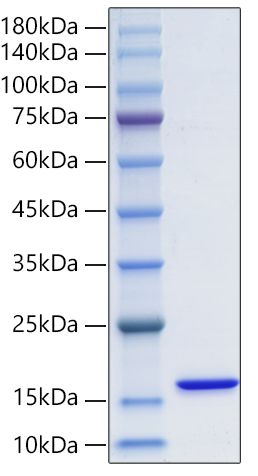FABP3/H-FABP,FABPs are thought to play a role in the intracellular transport of long-chain fatty acids and their acyl-CoA esters.Fatty acid binding protein-3 is a member of a large superfamily of lipid binding proteins that are expressed in a tissue specific manner . Although all are highly conserved in their tertiary structure, there is only modest aa identity between any two members. The FABP family members are subdivided based on organ or tissue type it was originally expressed or identified; liver- (L-FABP), intestine- (I-FABP), heart- (H-FABP), adipocyte- (A-FABP), epidermal- (E-FABP), ileal- (IL-FABP), brain- (B-FABP), myelin- (M-FABP) and testis-FABP (T-FABP). Human H-FABP, the product of the FABP3 gene, is a 132 aa cytosolic protein that shows a flattened beta -barrel structure generated by a series of antiparallel beta ‑strands and two alpha ‑helices . One molecule of FABP3 is capable of binding one long-chain fatty acid . It is suggested that ligands first bind to the outside of the molecule, and this binding subsequently induces a conformational change in the binding protein, resulting in "internalization" of the ligand . Human FABP3 is 86%, 89% and 89% aa identical to mouse, rat and canine FABP3, respectively.







